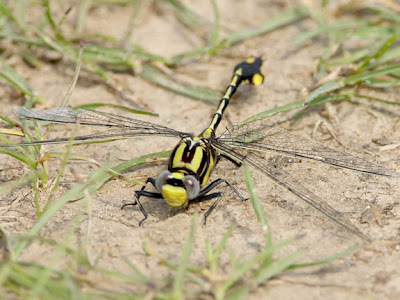 Since I did not want to leave the turtle there to be tormented or worse yet hit by a car and since I was not sure it could make it up the high curb all by itself I waited until the turtle turned to face the guy with the stick and then I picked it up and placed it in the grass on the side of the road. With the no curb to block its way the turtle moved into the brush towards the nearby pond.
Since I did not want to leave the turtle there to be tormented or worse yet hit by a car and since I was not sure it could make it up the high curb all by itself I waited until the turtle turned to face the guy with the stick and then I picked it up and placed it in the grass on the side of the road. With the no curb to block its way the turtle moved into the brush towards the nearby pond.After I moved the turtle I read a post on birdchick.blog about female turtle holding water to soften soil when they lay their eggs. I do not know if this was a male or female but since males rarely leave the water I am guessing that it was a female, although when I picked it up it did not spill any water. Perhaps it had already laid its eggs and was trying to return to the water, I am not sure. I tried to find more info about female carrying water to moisten the soil but I could not find anything. Sharon had gotten this information from a biologist. Are there any other biologists or turtle experts out there that can shed some more light on this?

























 I think, here is your emblem
I think, here is your emblem























